About Activating Geometry
If you have a large component with localized problems in a small area, you can activate a set of surfaces of this area instead of the entire component before performing repair or other operations in IDD.
The activation of a surface set enables you to perform the following tasks:
• Define the scope of Repair before you click > on the Import DataDoctor tab.
• Display wireframes, tangency, and vertices.
• Define the scope of the Search tool to locate gaps and slivers.
• Limit the scope of selection of one or two-sided edges and vertices to the active surface set for the Move Vertex tool. You can perform tasks such as Delete and Extend for the selected edges.
You cannot define the scope of the Match operation by activating surfaces because Match is available only when you select surfaces. With the initial selection of surfaces, Match and Repair temporarily change the activation to display the wireframe of a surface subset that is being modified. Though Match works on selected surfaces, the Match tool is available for surfaces which are part of the active component or a component with a set of active surfaces. |
You can add or remove surfaces from this active set of surfaces of a component as follows. The following activation criteria are valid only within a component. You cannot activate surfaces across components.
• If you select and activate a subset of surfaces in the currently active surface set, the recently activated subset remains active while the previously active surfaces are deactivated as shown.
Subset of surfaces in the active set showing selection. | The subset of surfaces shows activation while the previously active surfaces are deactivated. |
|---|---|
 | 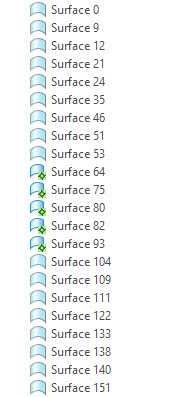 |
• Activating currently inactive surfaces of the component adds the activated surfaces to the initial set of active surfaces as shown.
The active surface set | Inactive surfaces selected for activation. | Recently activated surfaces are added to the previous set of active surfaces. |
|---|---|---|
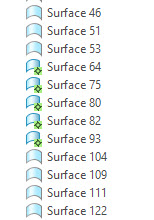 | 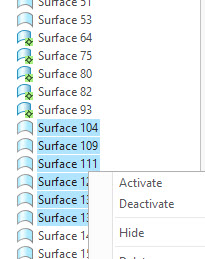 | 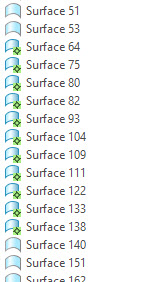 |
• Selecting and activating a combination of active and inactive surfaces activates all the selected surfaces while the previously active surfaces, not part of the selection, get deactivated, as shown.
A combination of active and inactive surfaces. | The combination of active and inactive surfaces selected for activation. | The selected surfaces display the active state after they are activated. The rest of the surfaces are deactivated. |
|---|---|---|
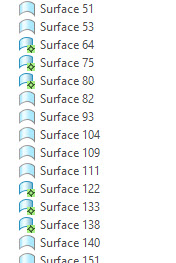 | 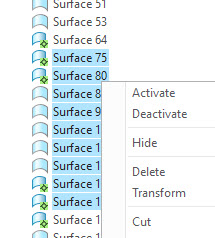 | 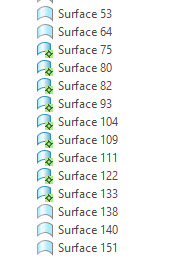 |
• Selecting and deactivating surfaces of an active component node or active surface set only deactivates the selected surfaces. The remaining surfaces of the component node that are not selected for deactivation remain active, as shown.
An active surface set | Surfaces of the active set selected for deactivation. | The selected surfaces after they are deactivated. |
|---|---|---|
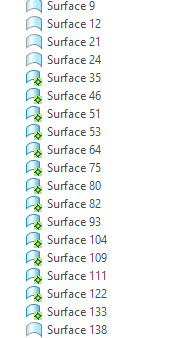 | 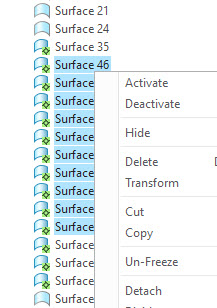 | 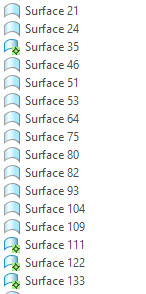 |
 Repair
Repair